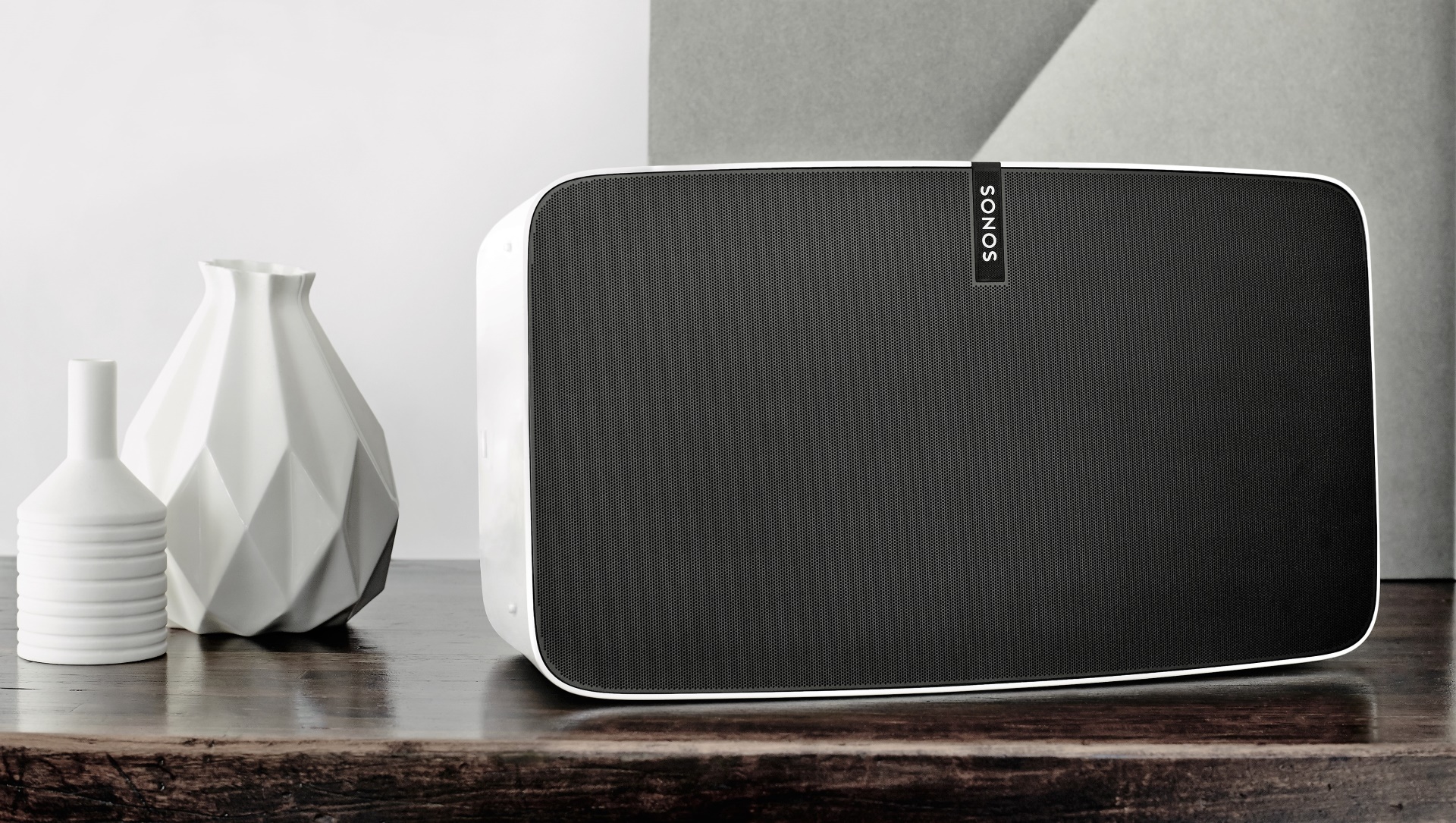
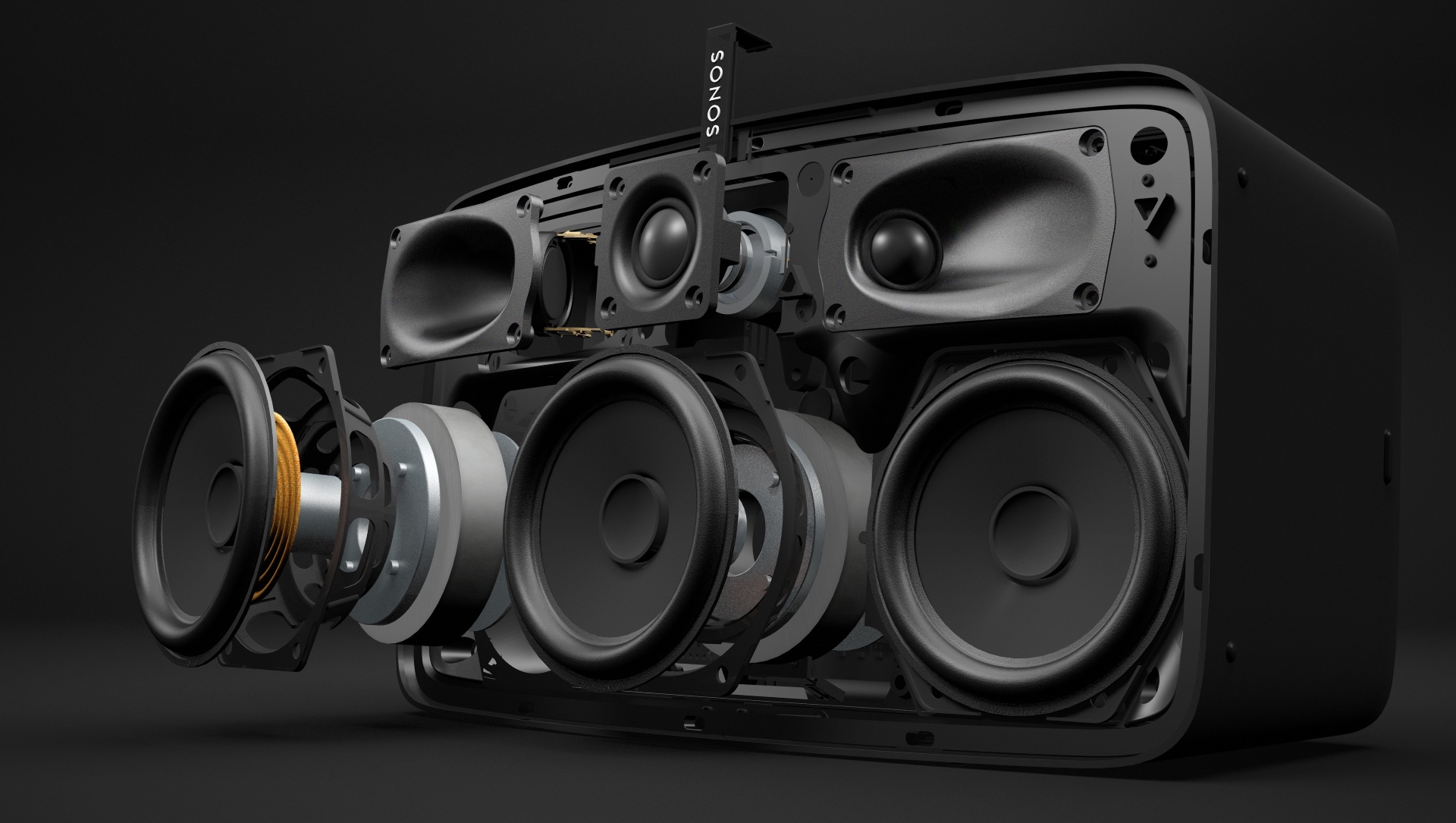
Introduction
It's pretty rare that Sonos reboots its speakers setups - mostly due to them being made to last at least 10 years and more with consistent software updates - so when we heard the Sonos Play:5 was getting replaced by an even shinier Sonos Play:5, we hopped on a plane to Santa Barbara to speak to those involved.
Here are seven surprising things that we found out about the Sonos Play:5 and the company's brand-new tuning technology, Trueplay.
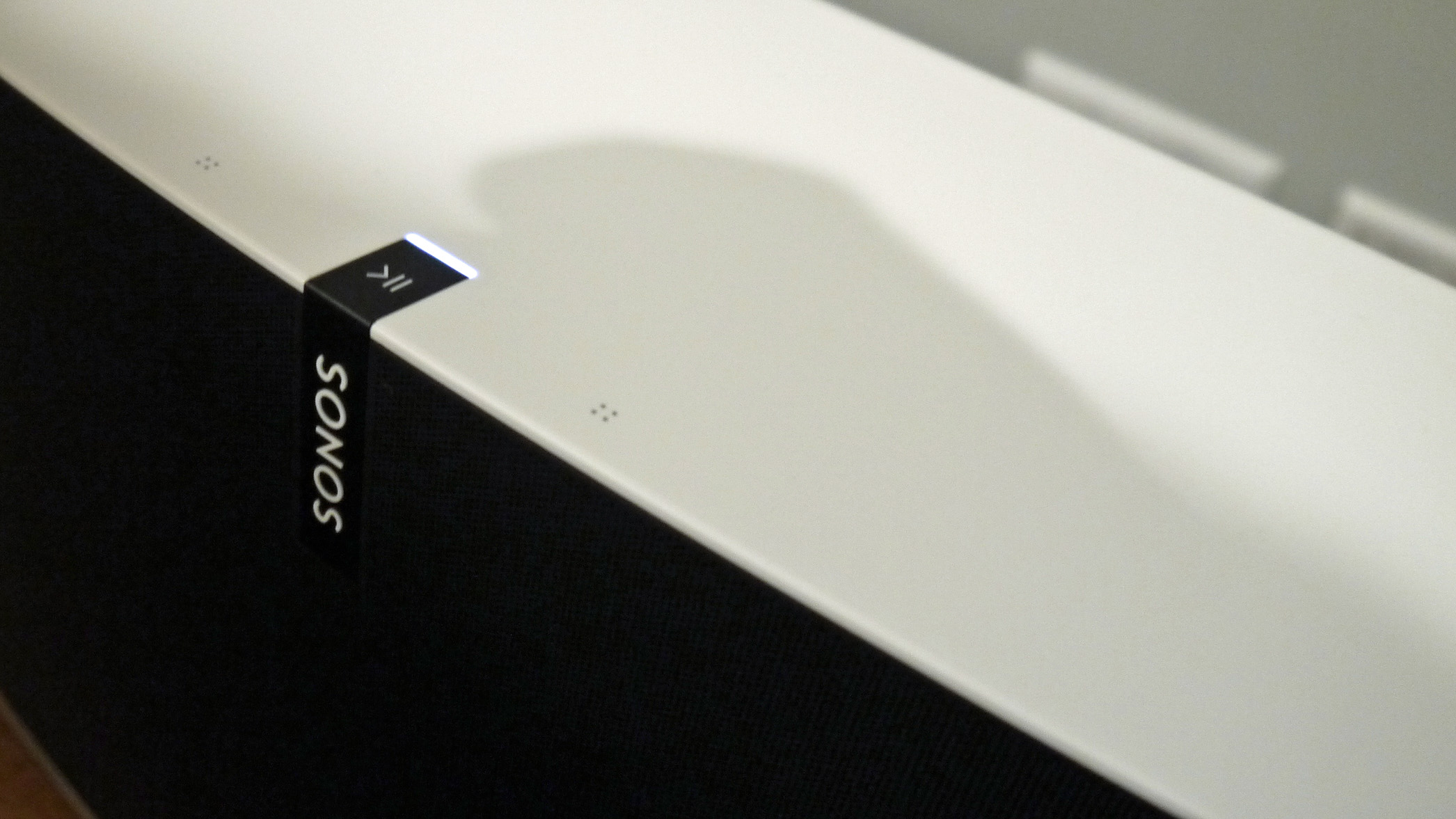
The logo may have been the reason the Play:5 took three years to make
Most Sonos products take around three years to go from concept to shelf. Each speaker has its reasons why it takes this long and we may have found out why the Play:5 was years in its making - the logo.
According to Tad Toulis, Sonos VP of Design: “With design, you are constantly having to make changes, with the realities you are encountering in the project. The question, then, becomes: will you have enough stamina and creativity to solve all those things that start to go wrong?”
One thing that took stamina was the creation of the logo - the engineers weren't happy with the tag in the centre as it may have changed the sound of the speaker. So, a compromise was made: the logo was created to be acoustically invisible, by having 800 holes lasered into it.
The initial response, according to Toulis, “was that you can't put anything in front of a driver but luckily we hit a breakthrough when we pointed out that the grill goes in front of the driver, so why not the logo tag?” Simple.

Rage Against The Machine helped create the Play:5
When you really want to test a speaker you have to pump the hottest music into it. And when we say hottest, we mean the music that pummels a speaker's components so much that it raises the temperature of the device.
“We analyse the digital tracks of all of the music and find the ones that consume the most power - and it turns out Maggie's Farm by Rage Against The Machine is the track that is the worst out there,” explains Jon Reilly, senior product manager at Sonos. “Maybe a listener will want to play Maggie's Farm on loop. They may also do that at 40 degrees Celsius, which is the highest operating temperature of the Play:5. So we test the speaker with Maggie's Farm at full volume at the highest temperature and we have to design a mechanism inside the Play:5 to ensure that none of the components exceed their specified temperature ranges.”
There you have it, to test a speaker properly you need a bit of Rage.
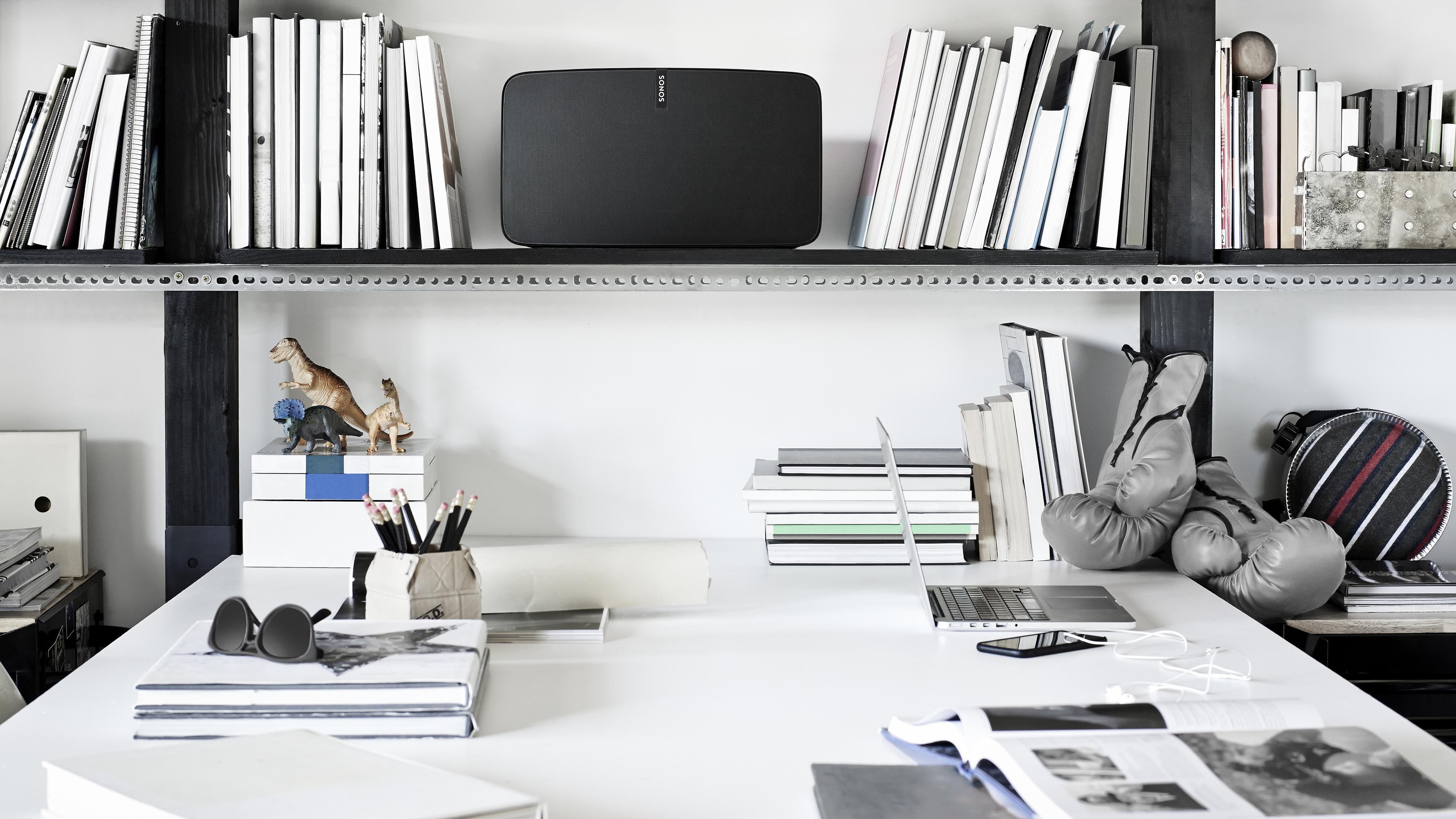
The Play:5 was re-engineered from the ground up with good reason
Jon Reilly, senior product manager at Sonos, explained to us just why the Play:5 had to be completely redesigned:
“We wanted to start from scratch with the Play:5 and it was the best thing we could possibly do. Nothing was reused. We took the best driver we had in house then figured out how to make it better, designing it again afresh. We took the Play:1 speaker, updated it and put three into this system.”
The result is Sonos' most-powerful speaker that houses three 10cm woofers, one 22mm tweeter on each side of the chassis and a 23mm tweeter in the middle. This speaker will be disappointed if you don't play it loud.
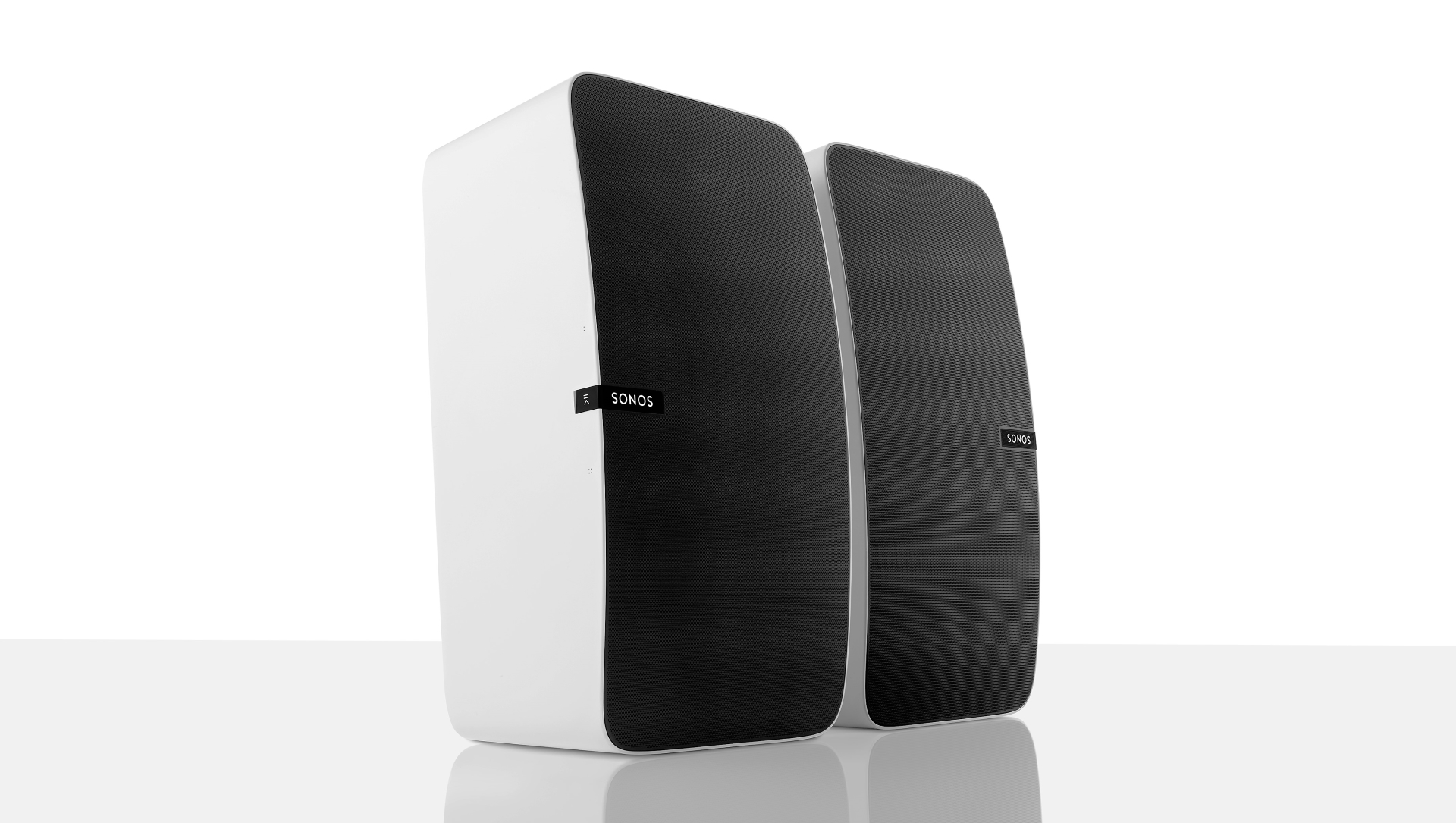
£10000 speakers are what the Sonos Play:5 are getting compared to
Giles Martin is the son of George Martin, the legendary producer of the Beatles. He is a producer in his own right, having helped engineer the Love show in Las Vegas. He knows a thing or two about music and is currently a Sonos sound leader. Oh, and he compares the Sonos Play:5 to studio-quality speakers.
“These speakers are getting compared to beautiful floor-standing speakers, speakers in studios that cost £10,000. These are the points of comparison,” he says.
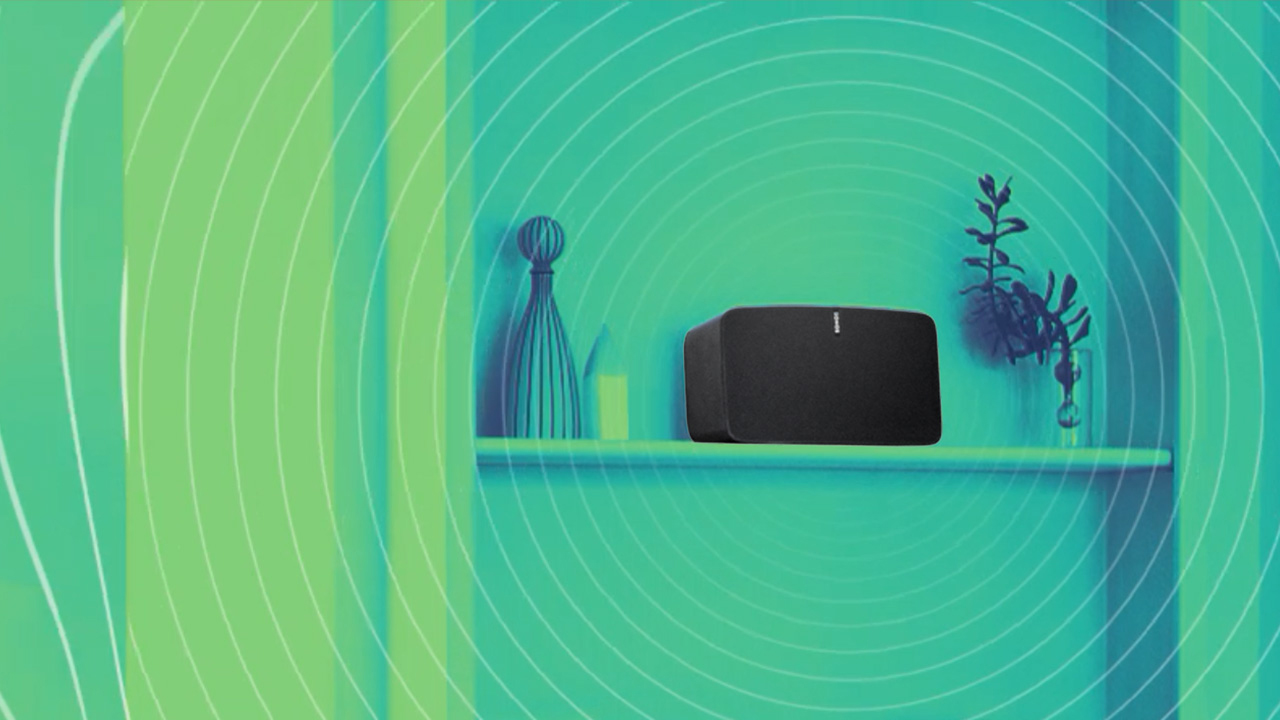
High-res audio? Most people can’t tell the difference
Martin also believes that before we wade into the high-res audio debate, we should make sure that streaming music is at least good to CD quality first.
“The idea of high-res audio is a really convenient way for audio companies doing 0-60 with cars,” he explains. “We need to get back to people listening at CD quality first then have that conversation - otherwise it just becomes a numbers game.”

It no longer matters where you stick your speakers in a room
Alongside the Sonos Play:5, the company has also introduced Trueplay. This is an easy way to acoustically map the room where your speaker is and then some clever algorithms will change the sound to suit. What this essentially means is, you can plonk your speaker pretty much anywhere.
“One of the things we learned over the last six years of speakers, not every room is designed for acoustics,” explained a Sonos spokesperson to us, who demoed Trueplay.
“If you have a Play:1, one of our most popular speakers, people love to put that in the oddest places. They will stick it under a chair, in a corner by the cabinet. From our perspective, we don't want that to be bad. We want you to put that speaker everywhere you want. We don't want you to change your life, we want you to be able to use the technologies we have at our disposal to make it that you can put that speaker wherever you want and you will always have it sound great.”
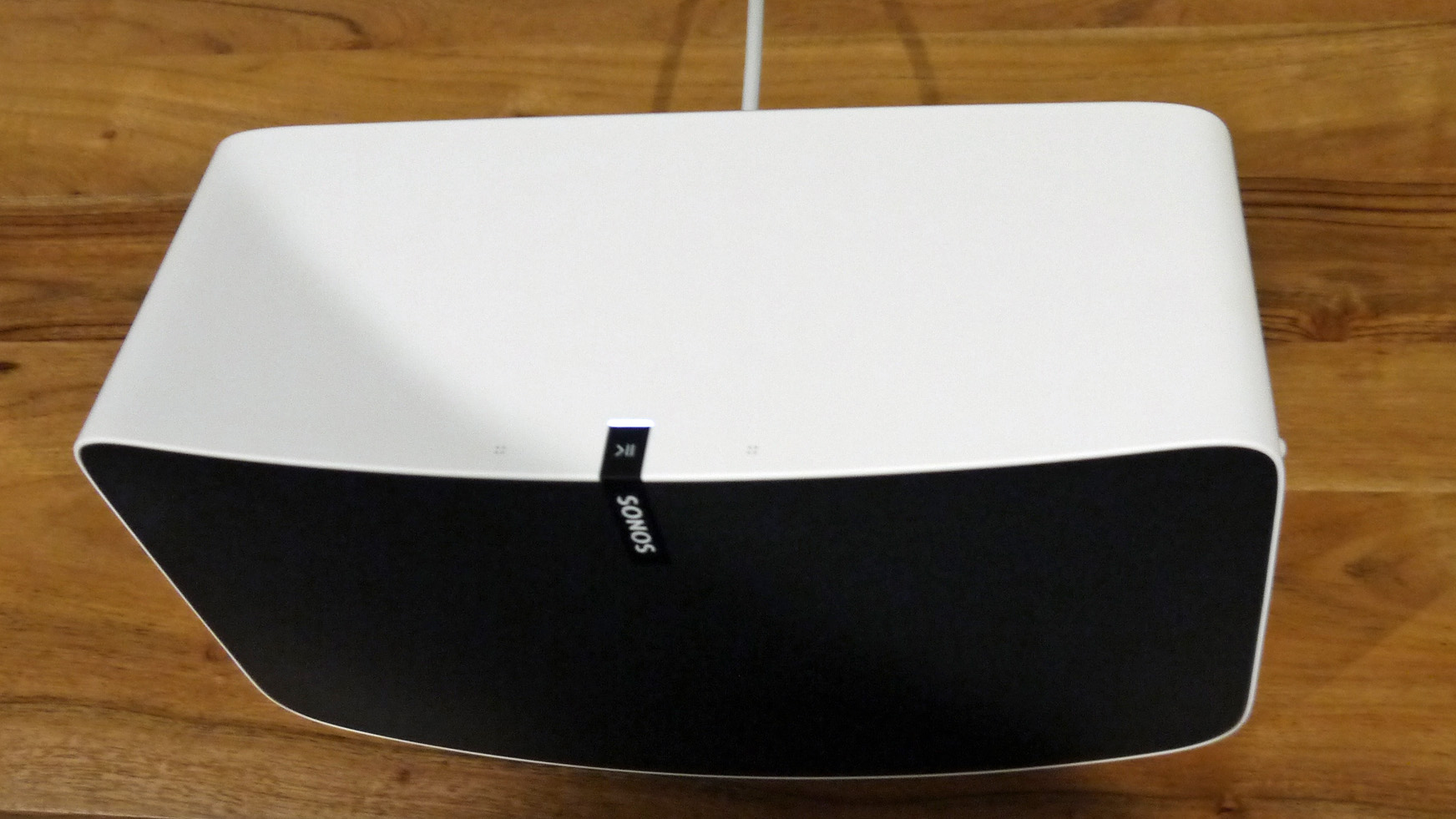
Stress testing of the Play:5 was done by its design team
A Sonos speaker has been built to last 10 years. That's a lot of wear and tear, more so now there are touch controls built into the Sonos Play:5. So, just how do you test them to make sure they last their lifetime? Well, sometimes it's down to the design team - more importantly Mieko Kusano, VP of Product Development at Sonos.
“The Sonos Play:5 has been designed to last - we are trying to do the same thing with this product as we do with the others,” says Kusano.
“It is getting difficult but we are finding ways to see what the use will be in a 10-year lifetime. I swiped the thing 70,000 times - I can tell you that it works and it will last!”
Get all the latest news, reviews, deals and buying guides on gorgeous tech, home and active products from the T3 experts